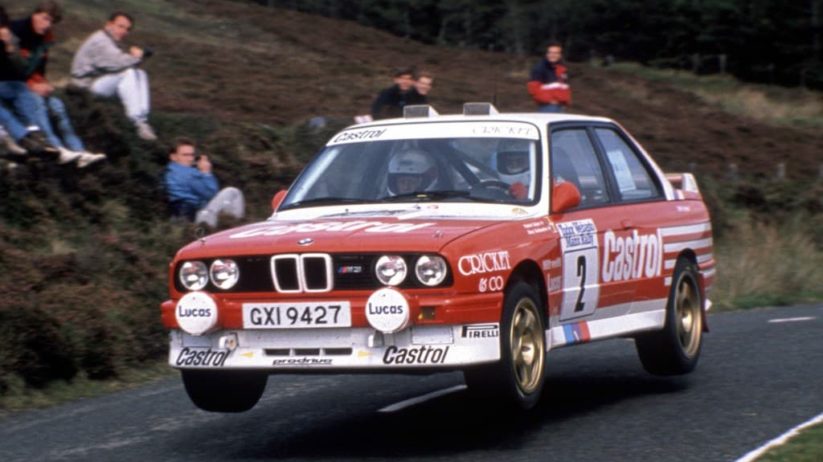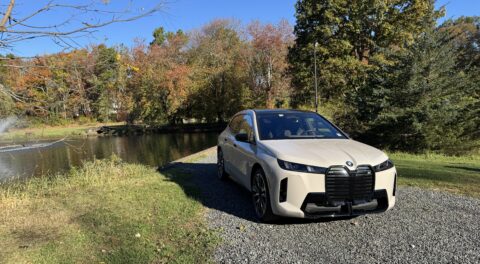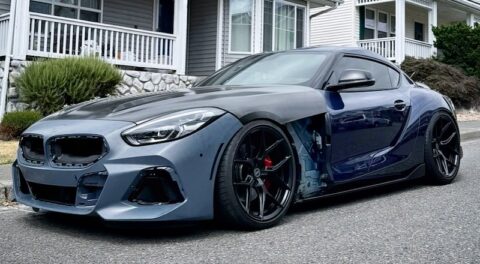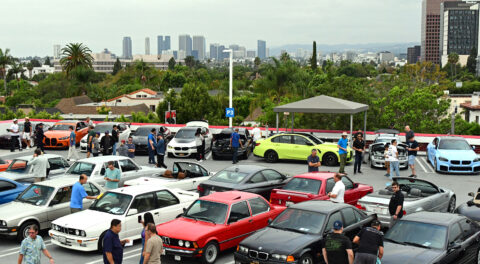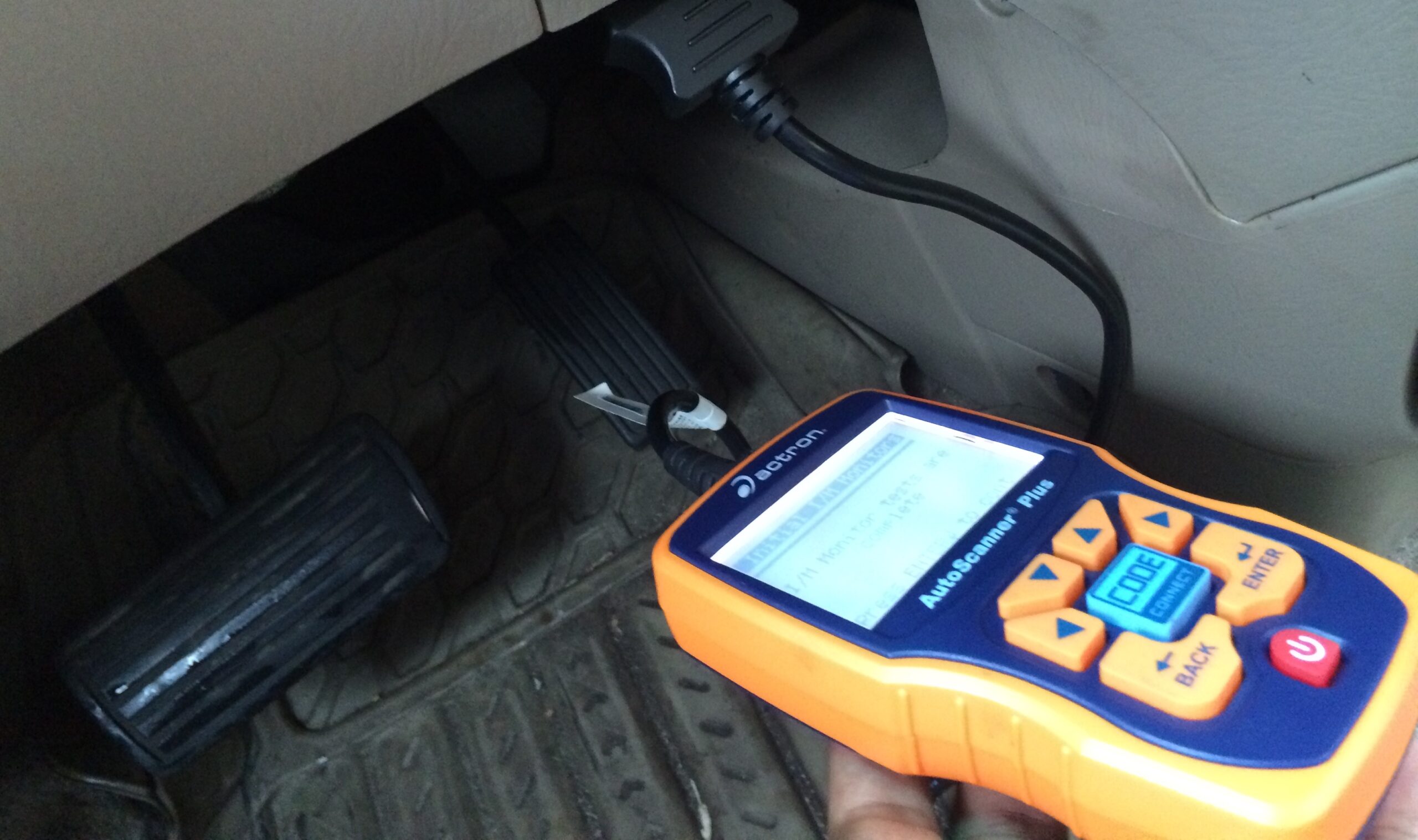Going wide-open-throttle over varying terrain with a co-driver screaming directions and numbers at you while you narrowly avoid sending it off a cliff—what’s not to love about rally racing?
But performance rallying isn’t for the faint of heart. Trying to figure out what gear you’re in while simultaneously translating the mysterious pacenote language that your co-driver is speaking alongside you is nothing short of a sensory overload—precisely why I have an extreme respect for the brave souls who possess this driving skill, which quite frankly, should be classified as nothing short of a superpower.
BMW’s rally history sometimes finds itself overshadowed by the brand’s long, successful legacy in the world of road-racing, often left in the shadow of DTM and other GT operations. It’s about time that those pages of the history books were wiped free of dust—BMW’s rally days deserve some discussion.
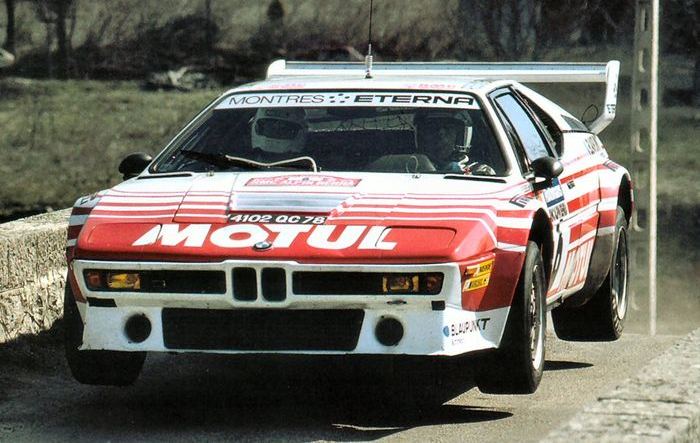
While the German automaker’s earliest performance roots were planted in the early 1930s when their 315/1 roadster team aced the Alpine trials—they even dabbled in rallying in the late 1930s with their breakout roadster, the 328—the discipline wasn’t pursued with fervor until the 2002’s entrance in the late ’60s, and the M1’s 1981 entrance into the infamous Group B rally sector a little over a decade later. The borderline suicidal antics of Group B weren’t enough to deter the brand from the sport, though; they eventually returned in 1987 with the legendary E30 M3. The M3 was a timeless classic that went on to win multiple rally championship titles, in addition to enthusiasts’ hearts. Homologation production volume of 5,000 set by the World Touring Car Championship (WTCC) officials for the E30 to be accepted at that time was surpassed with ease, and thanks to the 3 Series’ popularity, it resulted in the sale of nearly 18,000 M3 models.
The details of BMW’s rally history, however, can be somewhat cloudy—especially when it comes to hunting down individual model specifications and performance numbers, due to the variation in power figures that were often present among privateer teams. Although scouring through the technical archives for a while paid off, I certainly won’t be getting those spec sheets out of my head anytime soon. Sanity aside, below you’ll find (a few) of my favorite BMW rally cars to date, from both BMW Motorsport and BMW privateer racing teams.
Group 2 2002Ti
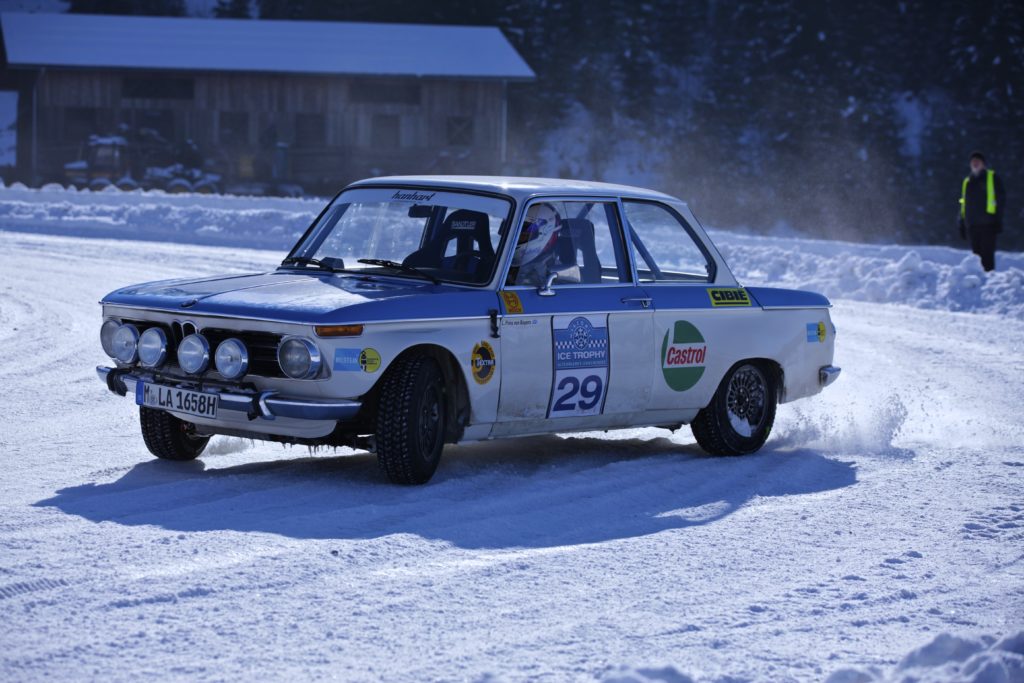
The 1969 works 2002Ti rally car, seen here at the 2013 gathering of the Austrian Historic Ice Trophy race
Powertrain: M05 (M10) Inline four-Cylinder (tuned)
Power Figures: approximately 190 horsepower, 210 pound-feet of torque.
Transmission: Getrag 232 four- or five-speed manual
Years Active: 1969–1975
The 2002 has earned its place in the BMW history books, and for good reason. As the precursor to the 3 Series and BMW’s inspiration to enter into the sport compact segment, the 2002 remains as well known as a road car as it does as a race car. The 2002’s rally-racing legacy, often pioneered by BMW-backed privateer teams, was born in the later ’60s at the hands of a few notable drivers, including Polish driver Sobieslaw “Sobi” Zasada, Tony Fall, and Achim Warmbold. Zasada’s most notable victory—and perhaps the 2002’s, too—came at the 1971 European Rally Championship. Shortly thereafter, German driver Achim Warmbold led the 2002Ti to successes in 1972 and 1973, at both the Portugal and Austrian Alpine rallies. Combined with the successes of Helle Bein and Zacki Zweibäumer, the 2002 reigned victorious in the German Rally for four years, from 1969–1972
Arguably one of BMW’s more dedicated attempts at the discipline, the 2002’s legacy would have been much longer, had the oil crisis not disrupted the 1973 and 1974 seasons of the World Rally Championship (WRC). Although the 2002Tii (which, rather ironically, was carbureted for racing despite its production model being a fuel-injected car) fought hard during the Royal Automobile Club Rally of 1973 under the command of Swedish racer Björn Waldegaard, the 2002 Turbo didn’t see any racing. Despite the team’s readiness, BMW’s first turbocharged production car had had its rally days cut short, again at the hands of the oil crisis.
Group 4/B M1
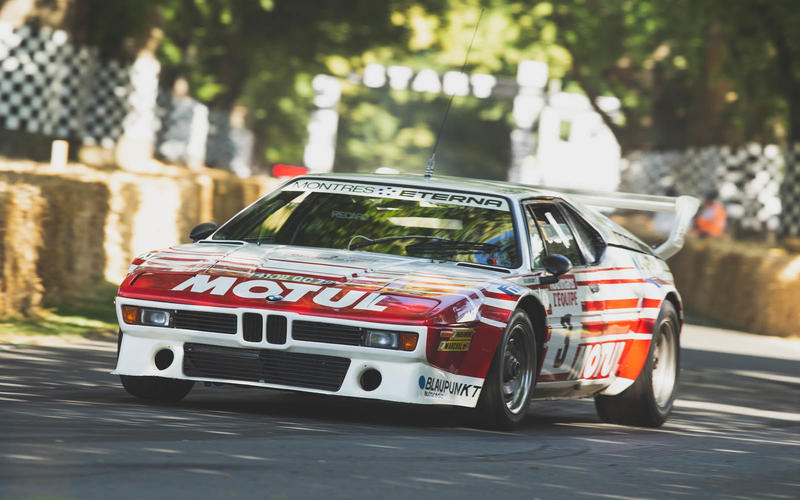
Team Oreca’s Motul-sponsored M1 rally car, seen here at the 2019 Goodwood Festival of Speed.
Powertrain: M88 Inline six-Cylinder (naturally-aspirated)
Power Figures: 430 horsepower/ 288 pound-feet of torque
Transmission: five-speed manual
Years Active: 1981–1984
The M1’s brief stint in rallying isn’t necessarily remembered as being particularly successful, with mechanical failures plaguing most of its rallying days. Like the aforementioned 2002, the M1 wasn’t ever a rally prospect for BMW, with the exception of one known BMW France contract. Initially starting out as a marketing expenditure, the contract dictated that French racing team Oreca would be allowed to race a heavily-modified ex-Procar. Although power wasn’t a concern (the M1’s power figures greatly outmatched the competition), reinforced hubs, a new brake system, shorter gearing, and a four-inch fiberglass extension to the wide body were absolute necessities before the M1 even touched a tire to a rally stage.
Over the course of its racing tenure, drivers such as Bernard Darniche and Bernard Beguin were very outspoken about the M1’s lack of controllability and reliability, both of which led to numerous mechanical failures and race retirements. The heavy, wide, rear-wheel-drive BMW unsurprisingly proved to be much harder to control on loose terrain than some of its four-wheel-drive competitors, such as the Audi Quattro A1. Despite its failures, however, the M1’s racing statistics weren’t solely negative: German driver Fritzinger Klaus managed a second-place podium during the 1982 Rallye Vorderpfalz, along with a ninth-place finish for Bernard Darniche. Regardless of racing detriments, the M1’s motorsport heritage has and will continue to interest me. An M1 with a wider wide body, modified rear wing, and rally lights? That’s something that will never not be cool!
Group A E30 M3
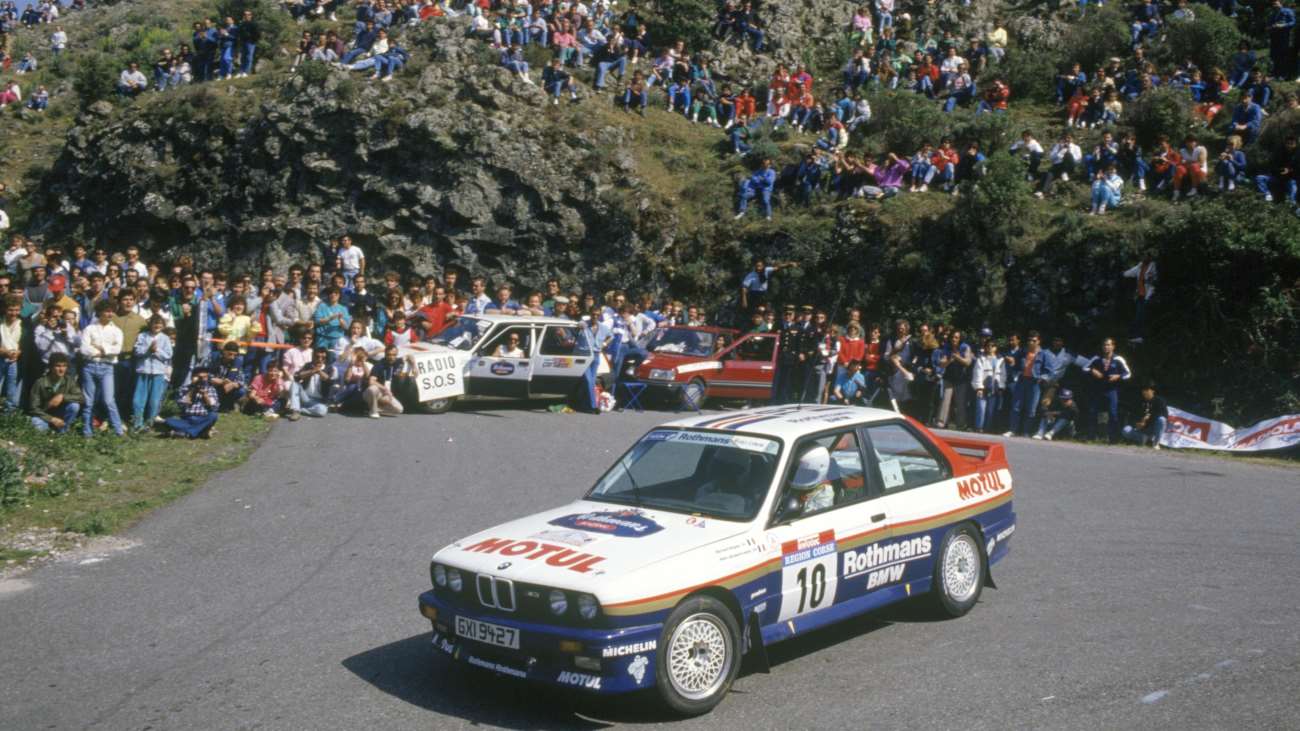
The famous E30 M3 piloted here by Bernard Béguin in 1987 in the Tour de Corse.
Powertrain: S14B23 inline-four
Power Figures: 235 horsepower
Transmission: Getrag 265 five-speed manual (six-speed after 1988)
Years Active: 1987–1990
Unlike the 2002 or M1, the E30 M3 was flagged by BMW engineers as car with rally potential. Joining other brands like Renault and Peugeot, BMW entered the E30 M3 into its first rally race in the late ’80s. After successes in 1987 at the WTCC Corsa Rally and Rallye de France, the E30 M3 showed that a rear-wheel-drive car could succeed at rallying. Although it sometimes fell short in the wake of its all-wheel-drive competitors, as in the case of the Lancia and Alfa, it was very adept at covering paved surfaces with blinding speed, the reason this asphalt assassin saw more successes in tarmac rally stages
However, although it was modified for all-terrain racing, the M3 still lacked the long suspension travel necessary to truly excel at clearing off-road stages. Whether the E30 M3 was suited for rallying or not, if you’re not convinced that this is one of the coolest-looking rally cars of all time, perhaps you’ll agree with me that it is one of the best-sounding. There’s just something about that S14 engine being wrung out over some gravel that is delightedly BMW.
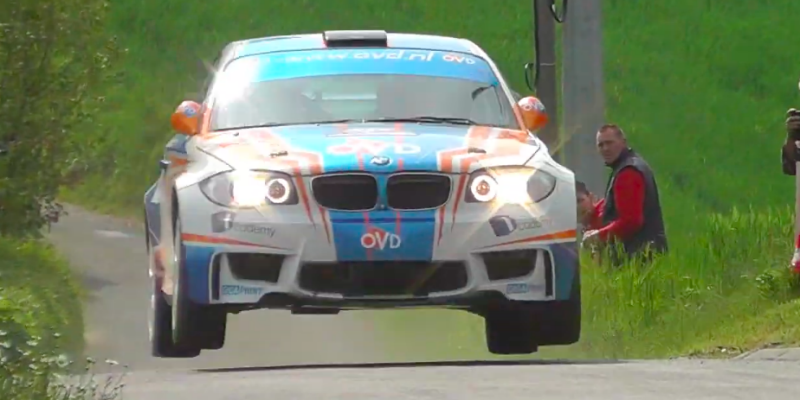
OVD Rally Team’s S54-swapped 1 Series.
The 2002Ti, M1, and E30 M3 do not make up the complete roster of BMW rally cars; while they may have been some of the more notable bimmers to hit the gravel, they don’t stand alone. Over the decades, a handful of BMW privateer teams have raced the likes of the E36 M3, E36 325i, and E87 132i, among others. If you really do some digging, you’ll also come across some crazy one-off rally builds, like this S54-swapped E82 1-Series or lifted E63 650i. There’s also a high probability that you’ll come encounter at least one Dakar-ready E83 X3 in the midst of your online reconnaissance.
While reaching triple-digit speeds through rocky seasides or coniferous forests may not be BMW’s forte, there is something commendable about having the guts to force a track-bred car out of its element. Success is arbitrary; while podiums may be of interest to others, I’d say that being able to hammer any bimmer off-road without a fear of rock chips can be considered a win in itself. Conquering all road surfaces may not have been BMW’s destiny, but it certainly is a brilliant part of the Ultimate Driving Machine’s history.—Malia Murphy
[Photos courtesy BMW AG, Autocar, E-WRC Results, LAT Images, OVD Rally Team.]

